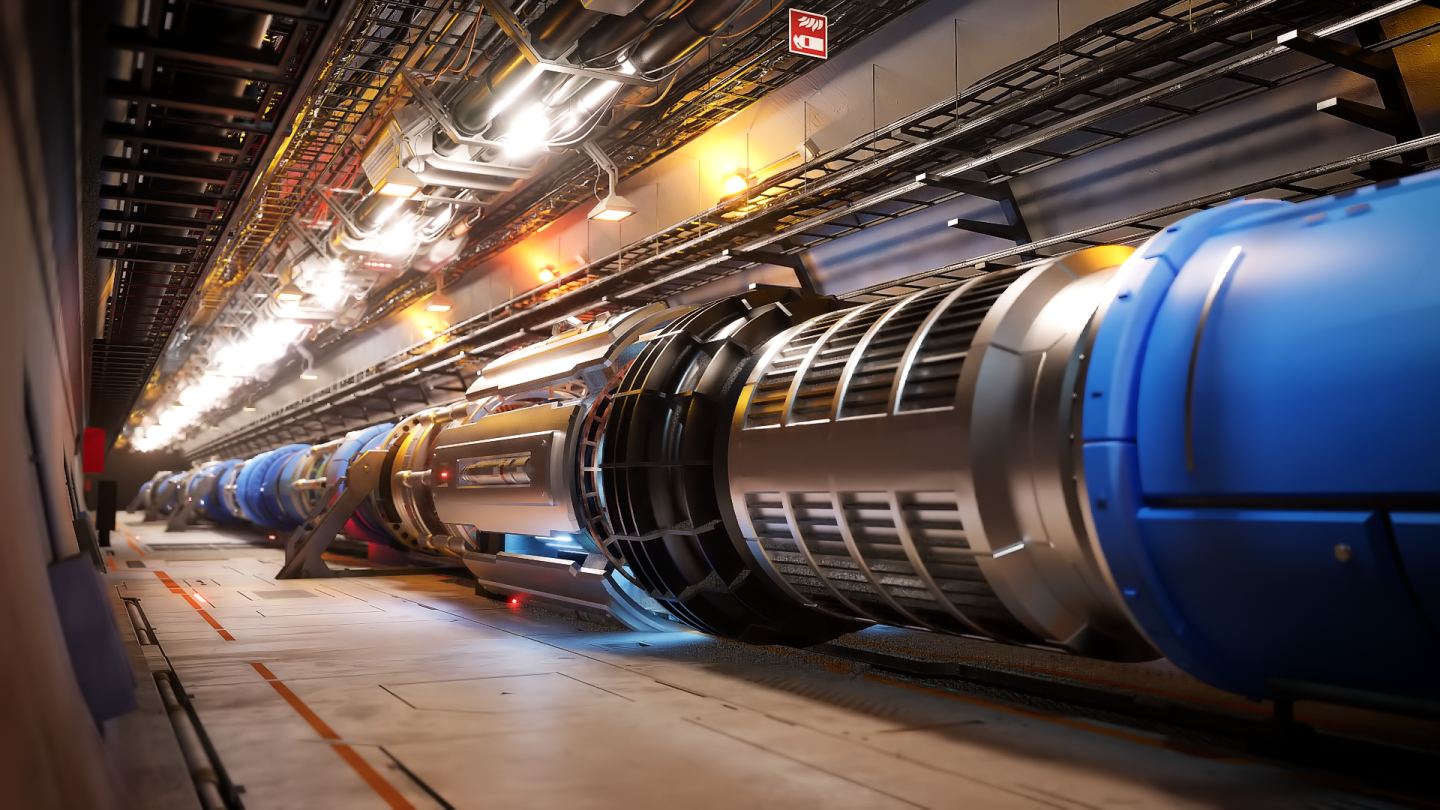Follow us on Google News (click on ☆)
The idea behind this physics behemoth? To go further in exploring the fundamental laws of the Universe. The feasibility study, just published, outlines the scientific, technical, and economic aspects of this extraordinary project.

Image: PIXELRISE
It all starts with the Higgs boson, this particle discovered in 2012 that plays an essential role in the mechanism giving mass to other particles. Without it, no atoms, no structured matter, no Universe as we know it. Yet it remains very enigmatic. It is precisely to unravel its secrets—and perhaps discover new particles—that the FCC was conceived.
The program includes two major phases. First, an electron-positron collider, capable of producing vast numbers of Higgs bosons to study them with unprecedented precision. Then, an even more ambitious phase: a proton-proton collider reaching a record collision energy of 100 TeV, nearly 7 times more than the LHC.
This roadmap follows the scientific priorities set in the European strategy for particle physics. But before considering any construction, we must ensure that all this is feasible: from a technical, environmental, geological, economic standpoint... This is the purpose of the report published by CERN.
The estimated cost of the first phase, including the tunnel and infrastructure, would be 15 billion Swiss francs, spread over about twelve years starting in the 2030s. Funding would mainly come from CERN's regular budget, as was the case for the LHC.

Map showing the preferred route for the FCC.
Image: CERN
Another crucial challenge: sustainability. CERN wants to make the FCC a model of responsible research, with as low an environmental footprint as possible. The report presents several approaches, such as reusing the energy produced or integrating the project into the affected regions, with local technological and economic benefits.
The preferred route for the tunnel would be 56.4 miles (90.7 km) long, at a depth of about 650 feet (200 meters), with eight surface sites and four large detectors. No fewer than 100 scenarios were reviewed before arriving at this choice.
Throughout the study, France and Switzerland—the two host countries of CERN—were involved, along with many local communities. A public consultation process is also planned to ensure open dialogue around the project.
The report does not mean the FCC will be built. It serves as a basis for discussion. It will be reviewed by independent experts, then submitted to the CERN Council in November 2025. A final decision could be made around 2028.
Behind this project, it's not just about advancing science. Colliders often have impacts far beyond laboratories: medical technologies, energy, materials, cutting-edge electronics... The FCC, if it comes to fruition, could well contribute to transforming our society as much as our understanding of the Universe.